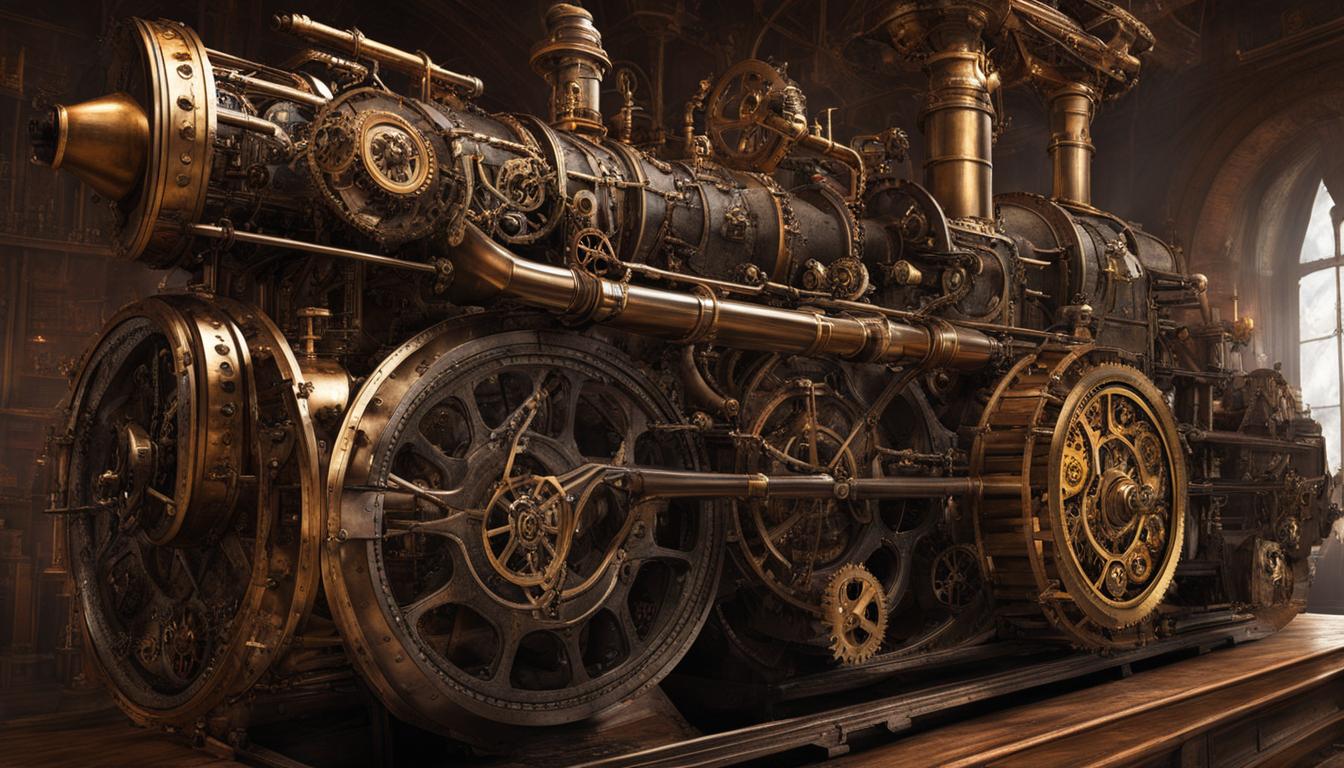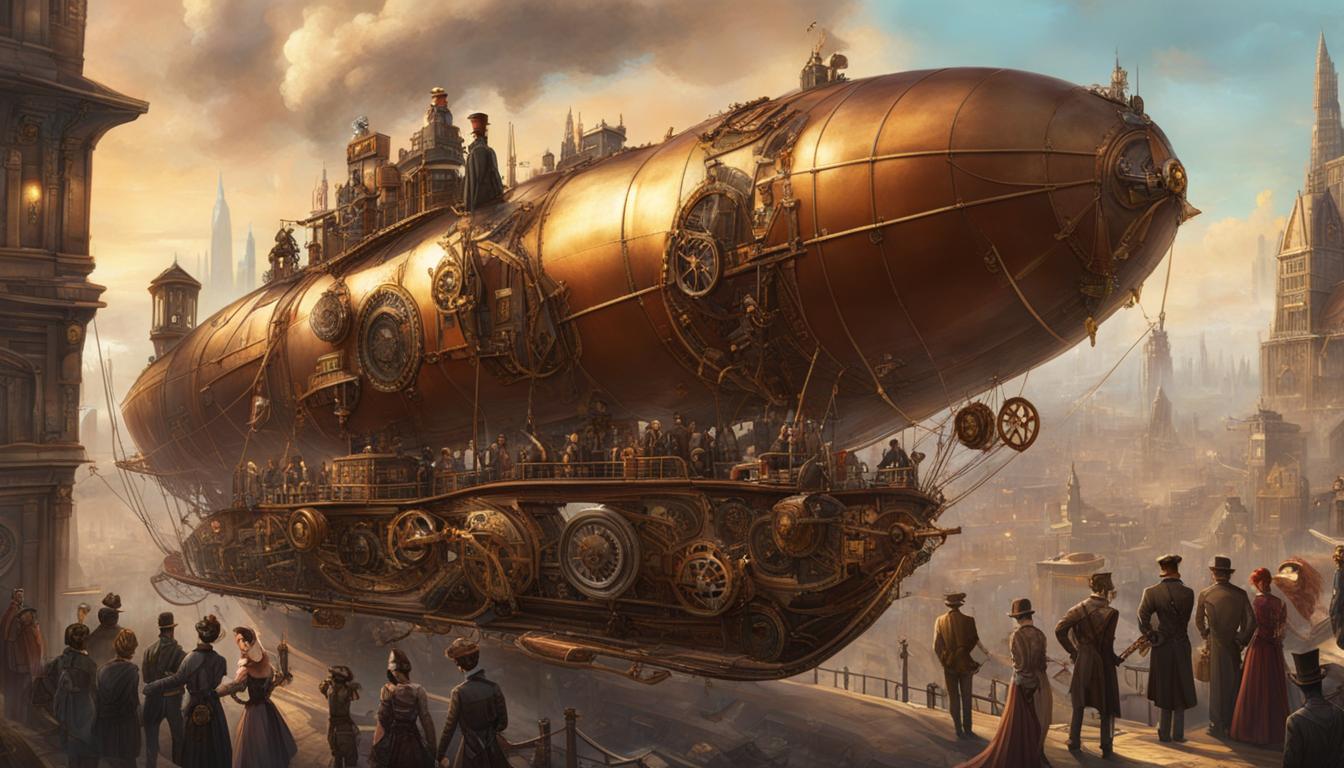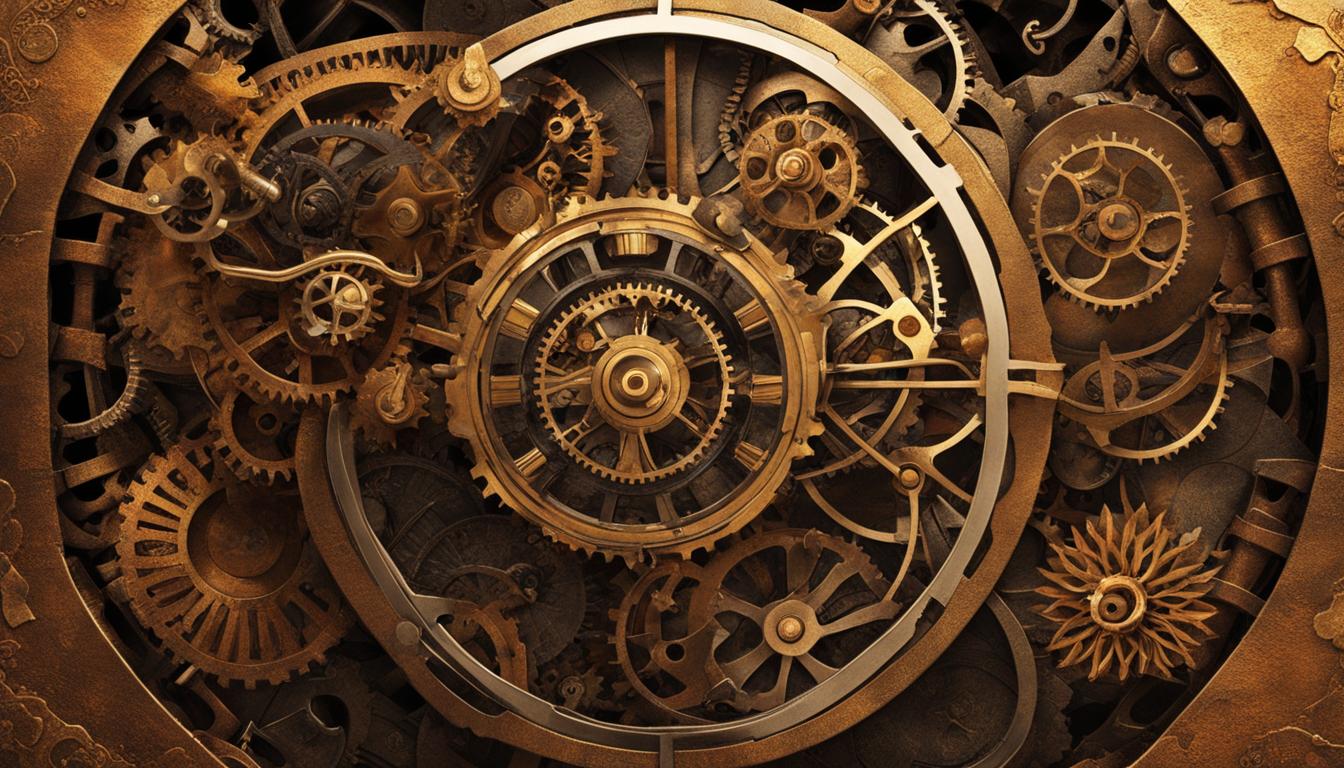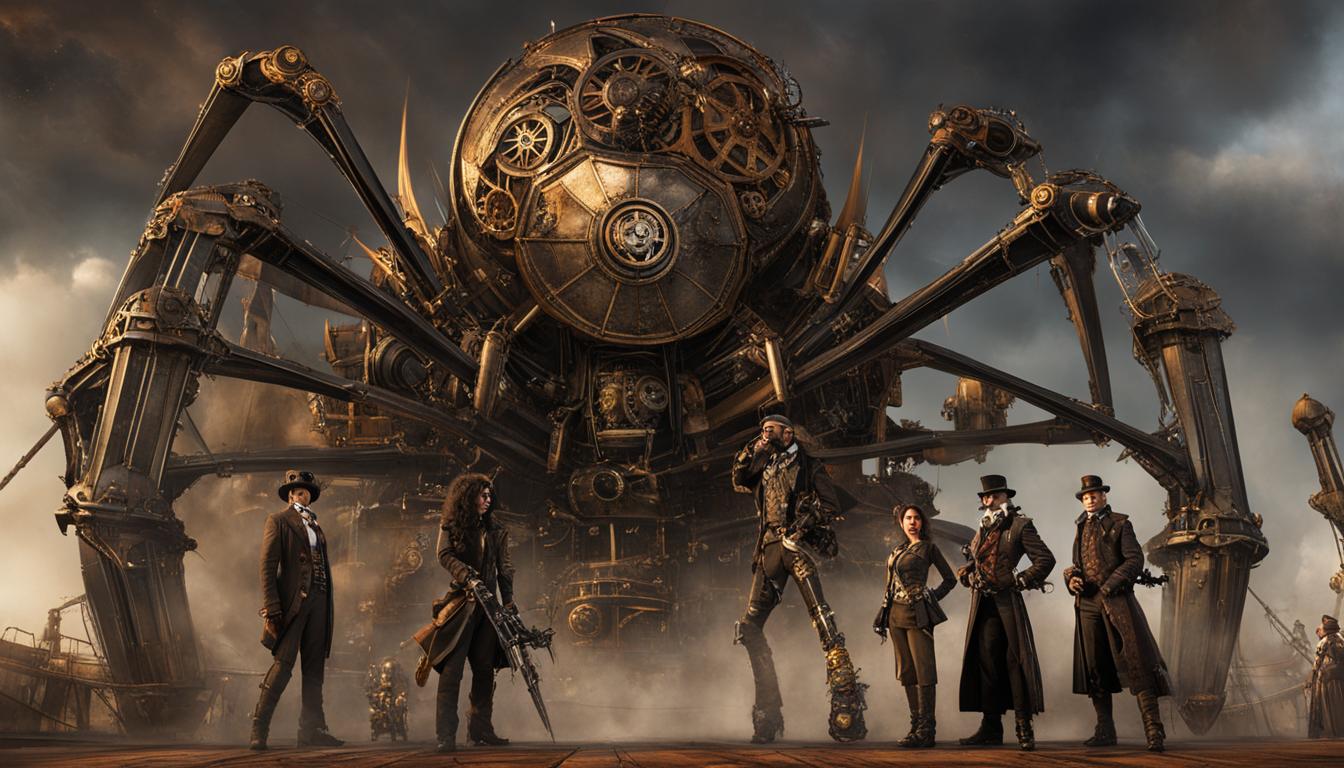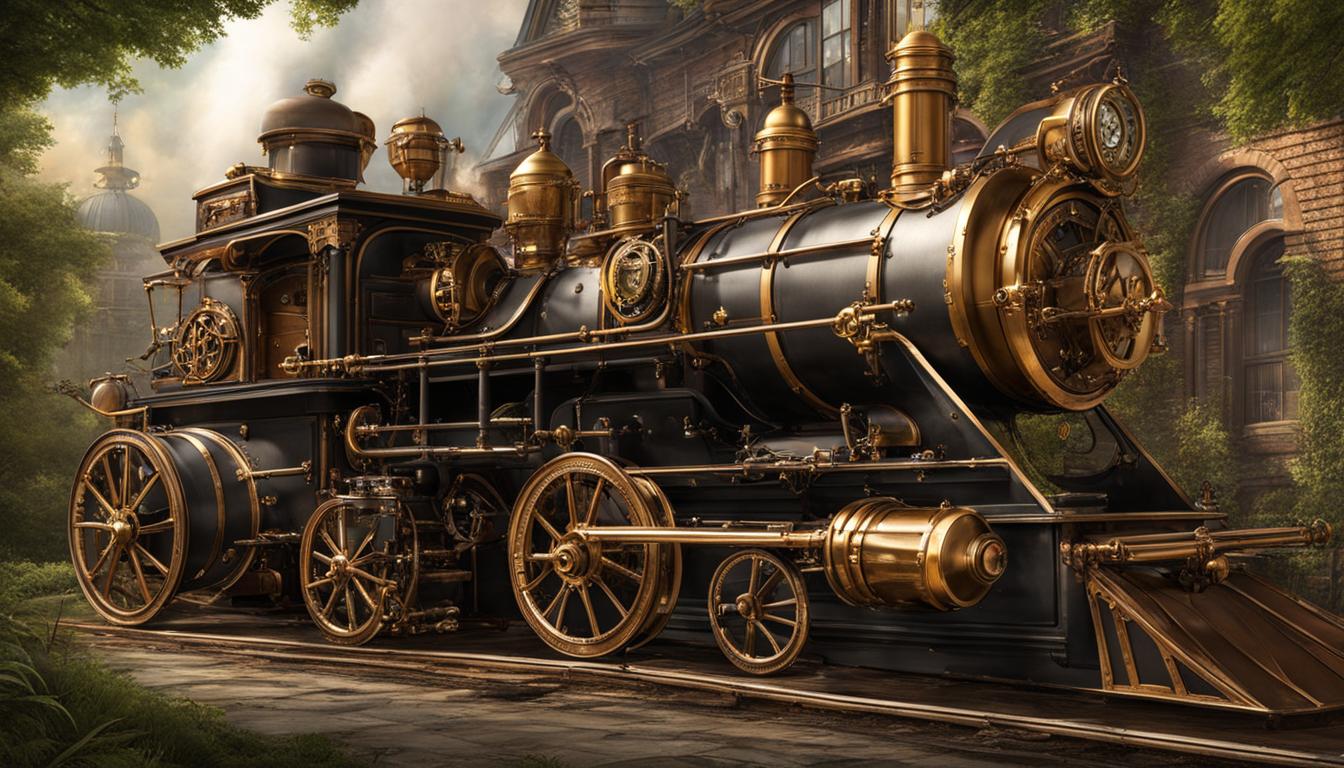Step into the world of steampunk, where Victorian elegance collides with futuristic technology, and you’ll discover a genre that offers a fresh and captivating perspective on 19th-century societal structures. Steampunk literature combines historical forces with imaginative storytelling to unravel the hidden layers of the time, exposing the technological, social, and intellectual undercurrents that shaped society.
Within the pages of steampunk novels, you’ll go on a thrilling journey of exploration as authors delve into the intricacies of the past. Brace yourself for a fascinating examination of the class struggles and inequalities that defined the era. Steampunk’s portrayal of aristocracy and commoners unveils the opulent lives of the privileged alongside the struggles of those on the margins.
Key Takeaways:
- Steampunk offers a unique perspective on 19th-century societal structures through a combination of Victorian culture and retro-futuristic technology.
- Steampunk literature explores historical forces, dissects aspects of modernity, and provides an alternative to classic Science Fiction.
- Steampunk portrays the dynamics of aristocracy and commoners, shedding light on the class struggles and inequalities of the time.
- Victorian social norms are reimagined in steampunk settings, challenging gender and societal roles of the era.
- Steampunk offers a glimpse into daily life, professions, family dynamics, and education in the 19th century.
Steampunk’s Portrayal of Aristocracy and Commoners
In the world of steampunk, societal structures of the 19th century are brought to life with a riveting twist. Steampunk literature offers a unique portrayal of both the opulent aristocracy and the struggles of the commoners, shedding light on the class divisions and inequalities of the time. From grandiose airship pirate crews to underground movements fighting for justice, steampunk narratives bring together characters from different social backgrounds, creating a vibrant tapestry of class struggles and societal dynamics.
One of the most captivating aspects of steampunk is its imaginative reimagining of the aristocracy. The elaborate Victorian aesthetics intertwined with advanced technology reflect the lavish lifestyles and immense power held by the upper class. Steampunk authors showcase extravagant balls, luxurious steampunk inventions, and refined manners that epitomize the aristocracy’s influence. This portrayal allows readers to immerse themselves in the grandeur of the time while also questioning the fairness of such concentration of wealth and privilege.
From the grand estates of noble families to the elite societies governed by strict social norms, steampunk literature captures the essence of aristocratic life in all its glory. Through vivid descriptions and mesmerizing storytelling, authors transport us into a world where the aristocracy’s power is both awe-inspiring and questionable. In this intricate dance between opulence and inequality, steampunk encourages us to reflect on the dynamics of power and the consequences of unchecked privilege.
However, steampunk doesn’t solely focus on the aristocracy. It also shines a light on the struggles faced by the commoners, depicting their resilience and determination. Characters from humble backgrounds navigate a world marked by poverty, social injustice, and limited opportunities. Steampunk narratives often highlight the resourcefulness of these individuals as they fight against societal constraints and seek to better their lives. They form the backbone of the steampunk world, providing a relatable perspective that evokes empathy and inspires readers to question the status quo.
Overall, steampunk’s portrayal of aristocracy and commoners offers a captivating exploration of the social classes of the 19th century. Through its intricate storytelling, steampunk literature delves into the complexities of power, privilege, and the struggles faced by those on both ends of the social spectrum.
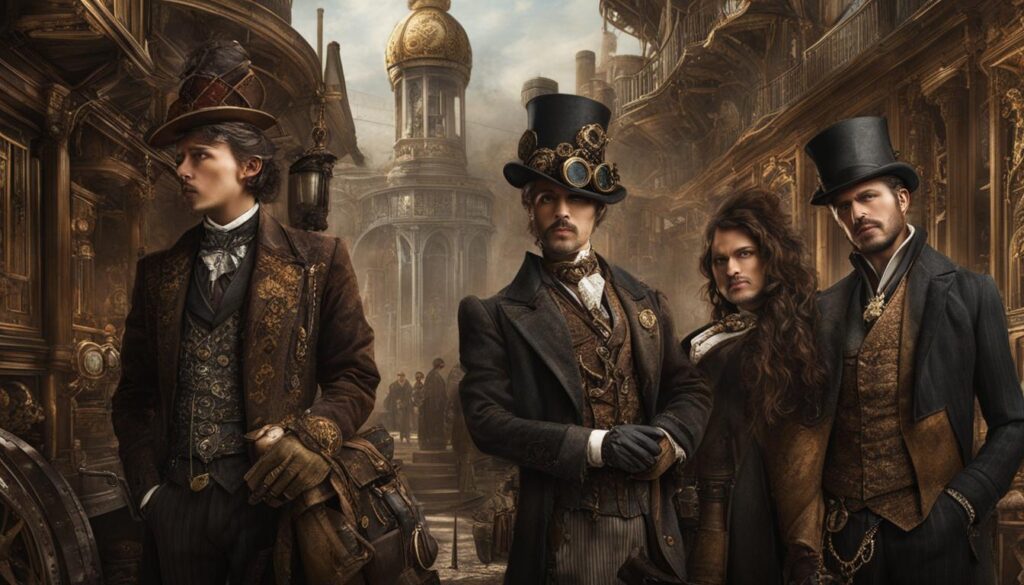
Table: Contrasting the Lives of Aristocracy and Commoners in Steampunk
| Aristocracy | Commoners |
|---|---|
| Grand estates and lavish lifestyles | Modest dwellings and limited resources |
| Access to advanced steampunk technology | Rely on their ingenuity and resourcefulness |
| Strict adherence to societal norms and expectations | Challenging societal constraints and fighting for justice |
| Exclusive aristocratic societies | Underground movements and secret societies |
Victorian Social Norms Reimagined in Steampunk Settings
Steampunk literature offers a captivating reimagination of Victorian social norms and expectations. Within these fantastical worlds, authors challenge the restrictive gender and societal roles of the era, presenting characters who defy traditional expectations and showcase new possibilities.
One of the most striking reimaginings in steampunk is the portrayal of strong and independent female characters. In contrast to the submissive and passive roles often assigned to women in Victorian society, steampunk literature showcases women who are inventors, explorers, and leaders. These empowering depictions not only defy societal expectations but also offer a fresh and thought-provoking perspective on gender equality.
Furthermore, steampunk narratives explore themes of LGBTQ+ rights and the empowerment of marginalized groups. By incorporating these themes into their stories, authors shed light on the struggles faced by individuals who did not conform to the rigid norms of the Victorian era. Steampunk serves as a platform for inclusivity and social progress, challenging readers to question and reconsider societal conventions.
Steampunk literature not only entertains but also encourages readers to reflect on the societal norms and expectations that shape their own lives.
Through the reimagining of Victorian social norms, steampunk literature provides an intriguing lens through which to examine and critique the societal structures of the 19th century. By infusing historical settings with elements of fantasy and technology, authors create captivating narratives that inspire readers to question their own assumptions and challenge societal conventions.
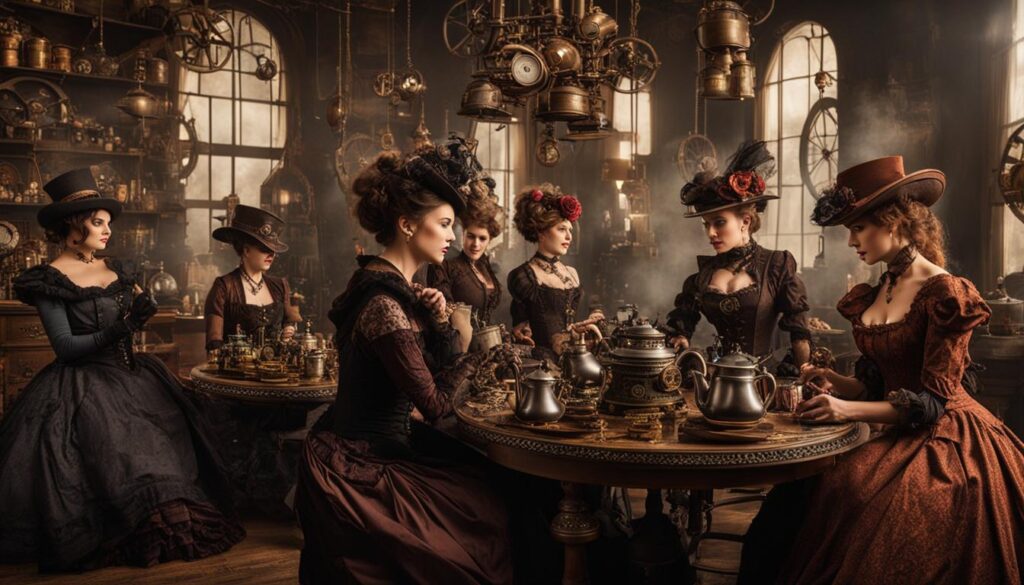
Table: Examples of Reimagined Victorian Social Norms in Steampunk Literature
| Social Norm | Reimagined in Steampunk |
|---|---|
| Gender Roles | Strong and independent female characters who challenge societal expectations |
| Social Class | Exploration of class struggles and inequalities, featuring characters from diverse backgrounds |
| LGBTQ+ Rights | Representation and empowerment of LGBTQ+ characters, highlighting the struggles of marginalized groups |
| Familial Expectations | Unconventional family dynamics that challenge traditional roles and relationships |
Table: Examples of Reimagined Victorian Social Norms in Steampunk Literature
Steampunk literature not only entertains but also encourages readers to reflect on the societal norms and expectations that shape their own lives. By reimagining Victorian social norms, steampunk authors provide a fresh and intriguing perspective that challenges readers to question and challenge the status quo.
Daily Life and Professions in Steampunk Worlds
Steampunk literature takes readers on a mesmerizing journey into the daily lives and professions of the 19th century, infused with fantastical elements that ignite the imagination. These unique narratives transport us to a world where advanced technology and Victorian aesthetics coexist, offering a fresh perspective on the challenges and innovations of the time period.
One of the captivating aspects of steampunk worlds is the array of intriguing professions that characters inhabit. From brilliant inventors crafting intricate clockwork gadgets to daring airship captains navigating the skies, the steampunk genre showcases a diverse range of occupations that blend the practical with the extraordinary. These professions capture the essence of the 19th-century era while incorporating fantastical elements that add a touch of wonder and excitement.
Within the steampunk genre, daily life is intricately intertwined with these unique professions. Characters go about their routines against a backdrop of Victorian-inspired settings, where they encounter the challenges and pleasures of their chosen occupations. Whether it’s the thrill of exploration as a steam-powered adventurer or the meticulous work of a clockmaker in a bustling city, steampunk narratives invite readers to immerse themselves in the details of daily life in a world where advanced technology and Victorian aesthetics seamlessly coexist.
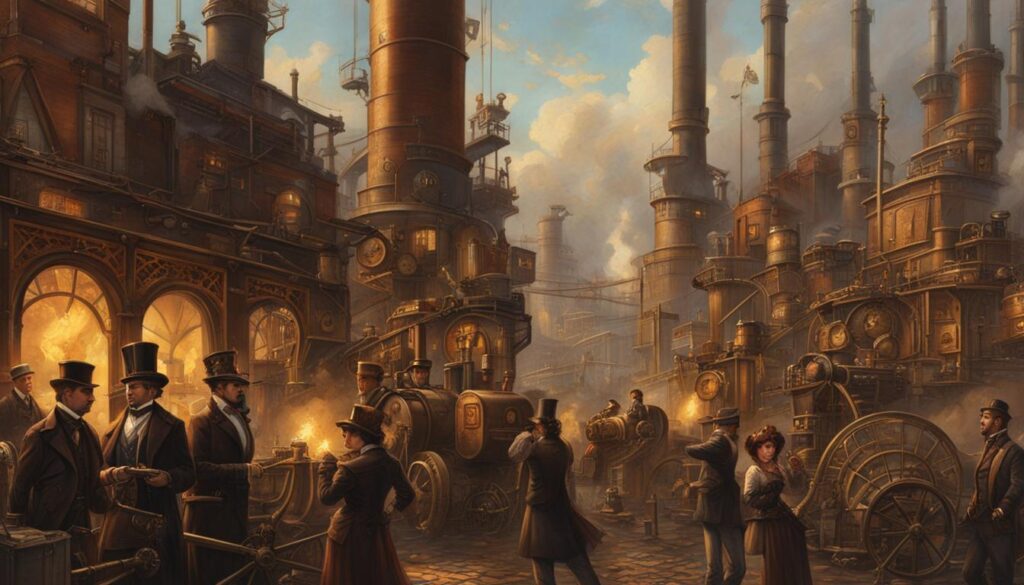
Table: Comparison of 19th-Century Professions and Steampunk Adaptations
| 19th-Century Professions | Steampunk Adaptations |
|---|---|
| Blacksmith | Automaton Engineer |
| Nurse | Aetheric Healer |
| Journalist | Airship Correspondent |
| Lawyer | Parasol Barrister |
| Sailor | Submarine Navigator |
This table illustrates the imaginative transformations that steampunk literature applies to 19th-century professions. The steampunk adaptations infuse these occupations with the fantastical, adding a sense of adventure and wonder to familiar roles.
Steampunk Perspective on 19th-Century Daily Life
Steampunk narratives not only showcase a diverse range of professions but also offer a unique perspective on daily life in the 19th century. These worlds blend historical elements with imaginative twists, creating a fascinating tapestry where characters navigate the intricacies of society, relationships, and personal ambitions.
From the bustling streets of steampunk cities, where steam-powered vehicles weave through the crowds, to the opulent ballrooms where characters don extravagant gears and corsets, daily life in a steampunk world is a captivating blend of history and fantasy. These narratives allow readers to experience the vibrant energy and quirks of 19th-century society, reimagined through a mesmerizing lens.
Steampunk literature provides a delightful escape into a world where the past collides with futuristic technology, offering a fresh perspective on the daily lives and professions of the 19th century. By blending historical elements with imaginative twists, this genre transports readers to a mesmerizing realm where Victorian aesthetics and advanced machinery coexist, inviting us to experience the challenges, wonders, and marvels of a bygone era like never before.
Victorian Family Dynamics and Education in Steampunk Worlds
Steampunk literature takes readers on a thrilling journey through a reimagined 19th-century society, offering a fresh perspective on Victorian family dynamics and education. In these fantastical worlds, families are portrayed in unconventional ways, challenging traditional norms and expectations. Characters navigate complex relationships and push the boundaries of societal roles.
In steampunk narratives, family dynamics are often depicted with a sense of rebellion, independence, and exploration. Siblings, parents, and children form unique bonds that defy the rigid structure of the era. Relationships are driven by love, trust, and shared experiences, with characters coming together to challenge societal conventions and fight against injustice.
Education in steampunk worlds goes beyond the traditional classroom setting. Steeped in creativity and innovation, steampunk authors reimagine the educational system with unconventional teaching methods, secret societies, and apprenticeships. Through these alternative avenues, characters acquire knowledge, skills, and a deeper understanding of the world around them. Steampunk literature provokes thought on the limitations of traditional education and emphasizes the importance of hands-on learning and critical thinking.
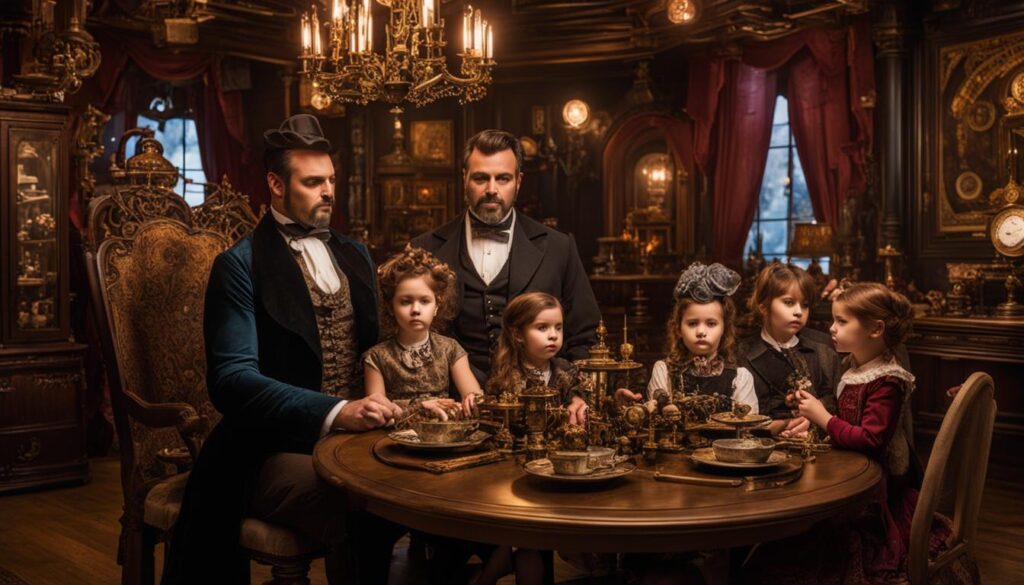
As we delve into the captivating world of steampunk, we are transported to an era where family dynamics and education are transformed, offering a fresh perspective on Victorian society. The reimagined relationships and unconventional educational methods challenge societal expectations, empowering characters to forge their own paths and challenge the status quo. Steampunk literature provides an exciting and thought-provoking exploration of family, education, and societal structures in the 19th century.
Conclusion
Steampunk, with its unique blend of history, fantasy, and technology, offers invaluable insights into the societal structures of the 19th century. By reimagining the past through a retro-futuristic lens, steampunk authors bring to light the historical forces that shaped the era. They dissect aspects of modernity while providing a substitute for classic Science Fiction, offering readers a captivating journey through time.
One of the most intriguing aspects of steampunk literature is its portrayal of social classes. From opulent aristocrats to struggling commoners, steampunk narratives vividly illustrate the class struggles and inequalities that were prevalent during the 19th century. By bringing together characters from different social backgrounds, steampunk authors challenge societal norms and shed light on the complexities of these historical divisions.
Furthermore, steampunk presents a fresh perspective on Victorian social norms and expectations. It defies the restrictive gender and societal roles of the era, empowering female characters as strong and independent figures who defy traditional expectations. This genre also explores themes of gender equality, LGBTQ+ rights, and the empowerment of marginalized groups, providing thought-provoking commentary on these issues.
In addition to its social commentary, steampunk literature delves into the daily lives and professions of the 19th century. Inventors, scientists, explorers, and detectives populate these fantastical worlds, showcasing the challenges and innovations of the time period. By blending advanced technology with Victorian aesthetics, steampunk narratives offer a fascinating glimpse into the intricacies of everyday life in the 19th century.
Ultimately, steampunk’s insightful lens provides a captivating and thought-provoking exploration of 19th-century societal structures. Through reimagined history, it sheds light on historical forces, challenges social norms, and offers a fresh perspective on gender, class, and daily life. Whether you’re a fan of history, fantasy, or both, steampunk literature invites you to embark on a thrilling journey through time and society.
FAQ
What is steampunk literature?
Steampunk literature is a genre that combines elements of Victorian culture with retro-futuristic technology, offering a unique perspective on 19th-century societal structures.
What are the purposes of steampunk literature?
Steampunk literature serves three purposes: exploring historical forces, dissecting aspects of modernity, and providing a substitute for classic Science Fiction.
How does steampunk literature portray social classes?
Steampunk literature reimagines the strict social classes of the 19th century and showcases the opulence and power of the aristocracy, while shedding light on the struggles of the commoners.
How does steampunk challenge Victorian social norms?
Steampunk literature offers a fresh perspective on Victorian social norms and expectations by reimagining the 19th-century setting and challenging and subverting the restrictive gender and societal roles of the era.
What aspects of daily life are explored in steampunk literature?
Steampunk literature delves into the daily lives and professions of the 19th century, reimagined with a fantastical twist, showcasing the challenges and innovations of the time period.
How does steampunk reimagine family dynamics and education?
Steampunk literature explores the complexities of Victorian families and the education system, offering an alternative lens through which to examine these aspects of 19th-century society, including unconventional relationships and innovative teaching methods.

